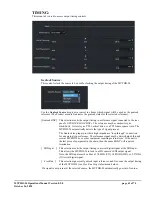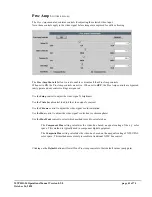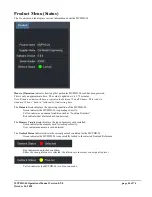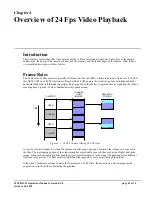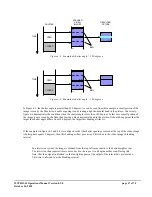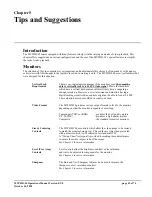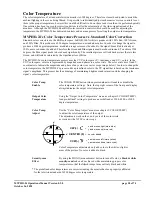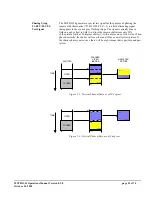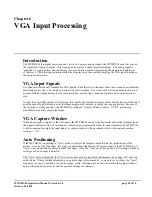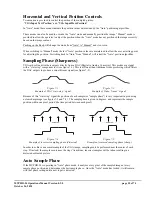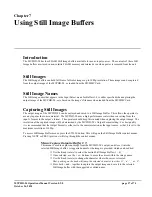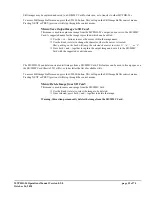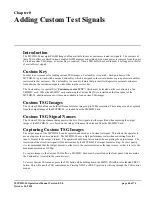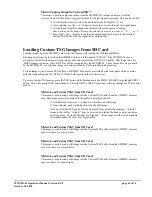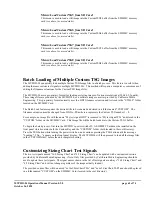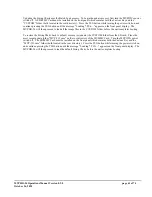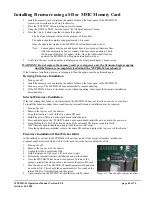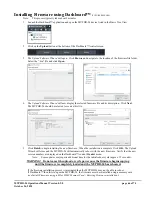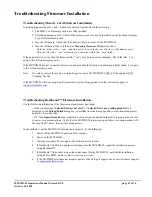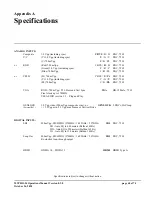
MVPHD-24 Operations Manual Version 0.9.0 page 53 of 74
October 26, 2020
Wide Camera Shutter Angles (>> 180 degrees)
In order to film standard 24 Fps video, the camera shutter angle needs to be approximately 180 degrees. Often
times however, larger shutter angles are desired or required by the director. Using the MVPHD-24, it is possible
to increase the shutter angle and still avoid any artifacts in the picture.
As explained in Chapter 4 (
Overview of 24 FPS Playback
), the blanking interval of the video signal allows some
variance of the shutter angle when the phase of the shutter is at 0 degrees. By increasing the blanking interval,
larger shutter angles can be achieved.
Calculating the Range of Shutter Angles
Calculating
Standard 24 Fps video has 300 active lines of picture information per field
the Range of
(1/2 frame) of video, and 655 lines in the complete frame. It can be seen that
Shutter Angles
300 / 655 = 0.458 or 45.8%. 45.8% of 360 degrees is 164.9 degrees, which
is the minimum shutter angle required to capture the entire image of field 1.
It can also be seen that (655-300) / 655 = 0.542 or 54.2%. 54.2% of 360
degrees is 195.1 degrees, which is the maximum shutter angle before the
second field image begins to be exposed.
TOP
TOP
BOTTOM
TOP
BOTTOM
300
ACTIV E
LINES
655 - 300
BLANKING
+ ACTIVE
LINES
655
TOTA L
LINES
TOP
BOTTOM
TOP
MINIMUM
ANGLE
MAXIMUM
ANGLE
Figure 5-3. Calculation of shutter angles for normal blanking.
Increasing the Shutter Angle by Resizing the Image
Increasing the
One method to get larger shutter angles is to increase the blanking interval by
Shutter Angle
reducing the vertical image size. The MVPHD-24 has Vertical Size and Center
by Resizing
controls which can be used for this purpose. The minimum size that the image
the Image
can be reduced is 50%, or 150 active lines per field (50% of 300 lines/frame).
Calculating the maximum shutter angle yields: (655 - 150) / 655 = .771 or
77.1%. 77.1% of 360 degrees is 278 degrees.
TOP
BOTTOM
TOP
MINIMUM
ANGLE
MAXIMUM
ANGLE
278
82
o
o
Figure 5-4. Maximum shutter angle by reducing vertical size.
Once the image has been sized to achieve the desired shutter angle, the picture
will probably look compressed when viewed on the television monitor. Using
the monitor’s Vertical Size and Centering controls, adjust the monitor to correct
the picture’s aspect ratio back to normal (use the “Sizing Chart” test signal).
Note: when using this method, additional blanking should be added to
compensate for phase and frequency tolerances.



